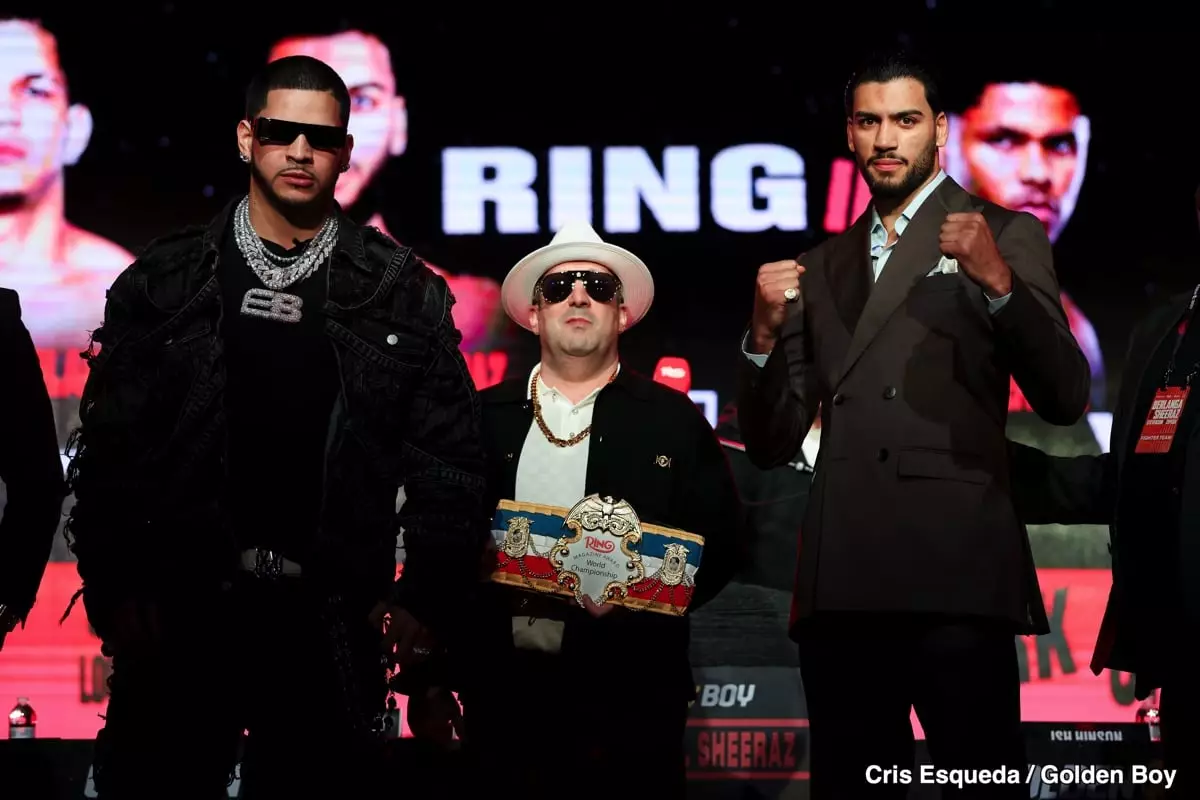In the realm of professional boxing, every detail, from fighter preparation to referee decisions, plays a crucial role in shaping outcomes. Yet, one often underappreciated factor is the size of the ring itself. The recent decision to reduce the ring size to 18 feet for the upcoming WBC super middleweight eliminator between Edgar Berlanga and Hamzah Sheeraz exemplifies how seemingly minor logistical modifications can influence a fighter’s strategy and the overall narrative of the bout.
Smaller rings tend to favor aggressive, pressure fighters who thrive on controlling space and forcing opponents into uncomfortable exchanges. Berlanga, known for his destructive power and relentless style, clearly sees this as an advantage. His declaration that he intends to “break him up” and make the ring smaller underscores a belief that environment shapes performance. Conversely, larger rings benefit movement specialists, allowing them to employ their boxing finesse, maintain distance, and frustrate power punchers.
This deliberate manipulation of ring size highlights the sport’s nuanced strategic layer. It also reveals the organizers’ intentions to craft a spectacle that benefits a particular style or narrative. The move to reduce ring size in this context signals a recognition that leveraging physical environment can be a game-changer, especially in high-stakes bouts like a title eliminator. Fighters and trainers must thus prepare for not just their opponent but also the setting, which can be a subtle yet decisive factor.
The Boldness of Fighters and the Diplomacy of Promoters
Berlanga’s comments about “breaking up” Sheeraz in an intentionally smaller ring reflect not only his aggressive mindset but also a calculated mental and physical approach to the fight. This bravado, paired with strategic planning, exemplifies the modern boxer’s dual requirement: maintain confidence while entering the ring with a clear tactical plan. It’s a display of boldness that often captures public imagination, but it also sets the stage for high expectations.
Meanwhile, the promoter Turki Alalshikh’s role in shaping the fight’s narrative cannot be overstated. His decision to avoid a predictable, dull matchup—often termed a “Tom and Jerry fight”—by insisting on specific ring dimensions and the nature of the contest shows a shrewd understanding of market dynamics. Promoters today aren’t just booking bouts; they’re crafting stories that resonate with fans and elevate fighters’ profiles. By pushing Sheeraz into a high-stakes scenario against Berlanga, they aim to accelerate his climb toward potential super-stardom, possibly paving his way toward a coveted fight with Canelo Alvarez.
This strategic gamble hinges heavily on the fighters’ performances and perceptions. Sheeraz’s willingness to accept the challenge, despite recent setbacks like his near-loss against Carlos Adames, demonstrates an admirable appetite for risk that most fighters would shy away from. It also underscores how ambition, fueled by promoter influence, is reshaping career trajectories within boxing’s competitive landscape.
The Stakes and the Future Beyond the Ring
For Sheeraz, victory would mean not just a significant professional milestone but a tantalizing shot at the sport’s biggest names. His trainer’s comments about revealing a surprise power punch suggest that the fight could pivot on a single decisive moment—an early knockout or a strategic outbox. Success here could propel him towards a confrontation with giants like Canelo, provided he navigates the remaining hurdles intelligently.
Berlanga’s aggressive attitude signifies a fighter determined to make a statement. He knows that if he can capitalize on the small ring’s confines and secure an early KO, he could fast-track his momentum toward championship contention. However, the pressure to perform optimally under these conditions also calls for mental resilience—something that can easily falter if comfort zones are challenged.
Overall, this fight epitomizes the delicate dance between environment, strategy, and raw power that defines contemporary boxing’s evolving narrative. It’s a reminder that behind every punch and every decision lies a complex web of influence—be it ring size, promoter ambitions, or a fighter’s own relentless pursuit of greatness. In this contest, both Berlanga and Sheeraz aren’t just fighting for victory; they’re fighting to redefine their standing in a sport that continually demands adaptation and unyielding ambition.

